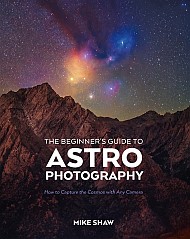Astronomy
The US is unlikely to test nuclear weapons, despite what Trump says
The US is unlikely to test nuclear weapons, despite what Trump says
Dinosaur skeleton settles long debate over 'tiny T. rex' fossils
Dinosaur skeleton settles long debate over 'tiny T. rex' fossils
Nanotyrannus Isn’t a Juvenile T-Rex—It’s a Separate Dinosaur
An analysis suggests Nanotyrannus is a separate, smaller dinosaur that lived alongside T. rex, settling a 30-year debate
FDA Is Investigating the Abortion Pill Mifepristone despite Decades of Studies Showing It’s Safe
Some scientists are concerned that the Trump administration will use “junk science” when reviewing mifepristone’s safety record
How an Error in Cult Classic Game Doom Sparked New Appreciation for Pi
What would the world look like if we changed the value of pi? Whether in the real world or a game environment, the answer is complex
Glowing Sperm Reveals How Female Mosquitos Control Sex
Female Aedes mosquitoes signal that copulation can proceed by subtly extending their genitalia
Germanium superconductor could help build reliable quantum computers
Germanium superconductor could help build reliable quantum computers
Sentinel-1D pre-launch media briefing
Follow the online briefing on the launch scheduled for 4 November 2025. The Copernicus Sentinel-1 mission delivers radar images of Earth’s surface. It is vital for disaster response teams, environmental agencies, maritime authorities, climate scientists.
We're Putting Lots Of Transition Metals Into The Stratosphere. That's Not Good.
We successfully plugged the hole in the ozone layer that was discovered in the 1980s by banning ozone depleting substances such as chlorofluorocarbons (CFCs). But, it seems we might be unintentionally creating another potential atmospheric calamity by using the upper atmosphere to destroy huge constellations of satellites after a very short (i.e. 5 year) lifetime. According to a new paper by Leonard Schulz of the Technical University of Braunschweig and his co-authors, material from satellites that burn up in the atmosphere, especially transition metals, could have unforeseen consequences on atmospheric chemistry - and we’re now the biggest contributor of some of those elements.
Live Earth From Space Video from the International Space Station ( From The NASA ISS Live Stream)
Surveying Atmospheric Escape from Gas Giants Orbiting F-Type Stars
Why is it important to know about exoplanets having their atmospheres stripped while orbiting F-type stars? This is what a recent study submitted to The Astronomical Journal hopes to address as an international team of scientists conducted a first-time investigation into atmospheric escape on planets orbiting F-type stars, the latter of which are larger and hotter than our Sun. Atmospheric escape occurs on planets orbiting extremely close to their stars, resulting in the extreme temperature and radiation from the host star slowly stripping away the planet’s atmosphere.
Jupiter Saved Earth from Spiralling Into the Sun
The gas giant’s early growth carved rings in the protoplanetary disk that surrounded our Sun billions of years ago. This process set the architecture for the inner Solar System and prevented Earth from spiraling into the Sun.
New Findings Say the First Stars in the Universe Were Born in Pairs
New research from Tel Aviv University reveals that the first stars in the Universe formed in binary systems. These stars played a vital role in the evolution of early galaxies, giving rise to black holes and seeding the Universe with the ingredients for life.
Stem cell therapy lowers risk of heart failure after a heart attack
Stem cell therapy lowers risk of heart failure after a heart attack
One Of The Milky Way's Satellites Could Be A "Little Red Dot"
A tiny dim satellite galaxy of the Milky Way doesn't have enough stars to hold itself together. Its properties suggest that its dark matter halo is holding it together, but new research counters that. Researchers say that it's not dark matter but a massive black hole that's keeping the dwarf galaxy intact.


